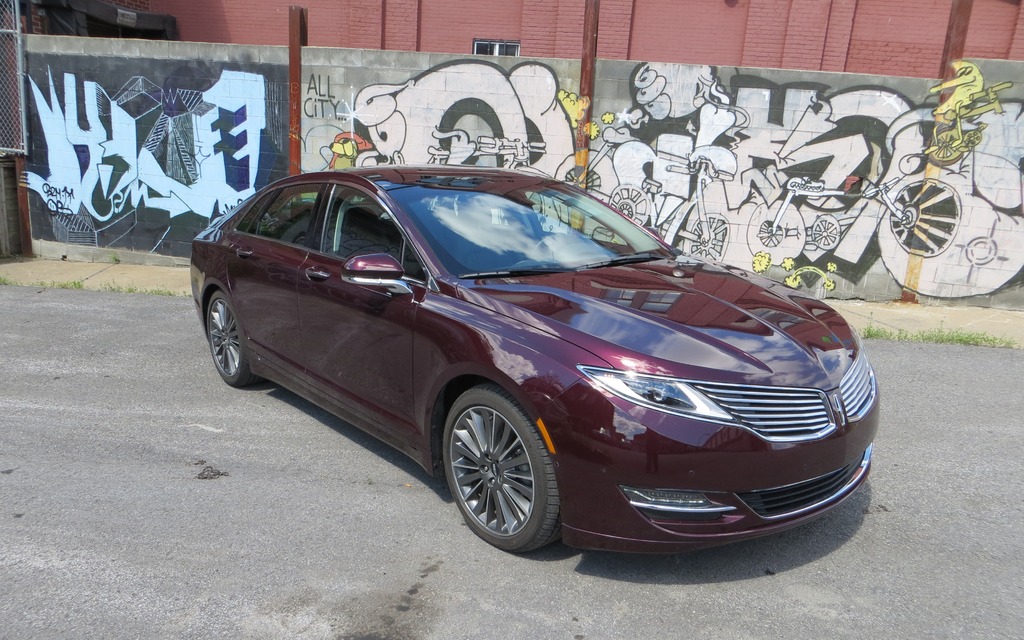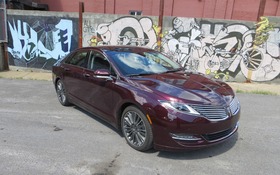2013 Lincoln MKZ Hybrid: Best Electric Foot Forward

| Strong points |
|
|---|---|
| Weak points |
|
The 2013 Lincoln MKZ is perhaps the most important car that the premium brand has released in the past decade. With public interest in Lincoln falling across the board, and with so few models available that are actually distinguishable from the Ford vehicles with which they share their platforms, the redesigned 2013 Lincoln MKZ mid-size sedan can be thought of as the automaker's last-ditch effort to take Lincoln off of life support.
I spent a week behind the wheel of the 2013 Lincoln MKZ Hybrid and came away pleasantly surprised by the effort that has been put into this vehicle by the company's engineers and stylists. There are a lot of things to celebrate about the battery-powered edition of Lincoln's most affordable four-door car, but will they be enough to overcome the inertia that has dragged the manufacturer to the bottom of the luxury ladder?
- Also: Lincoln Launches the MKC
- Also: A New Smell For Lincoln
Beautiful Bones
One thing about the 2013 Lincoln MKZ Hybrid is immediately obvious: this is the most beautiful sedan that Lincoln has had in its line-up since the dawn of the new Millennium. Sharing absolutely no body panels with the Ford Fusion on which the car is based, the MKZ Hybrid is a gorgeous collection of fluid lines. Up front, the car wears perhaps the best-yet implementation of the brand's waterfall-style grille, which incorporates the sedan's angular headlights in its chrome surround, and from behind the vehicle's understated and almost-tucked bumper and unique extended rear window (and stubby, wing-like trunk lid) are unlike anything seen on past Lincolns. This is a car that is designed to attract attention, which is exactly what it did from a surprising number of passers-by during my time with it.
The MKZ Hybrid makes full use of the MyLincoln Touch system as the touchstone of its flowing center console and stack. The button-less façade works well, and the MyLincoln touch buttons on the steering wheel (which interface with the twin LCD screens mounted directly in front of the driver) are a better implementation than the oddly-shaped analogs found on modern Fords. A push-button transmission interface is located to the left of the vehicle's touchscreen, and while it takes some getting used to it's a perfectly acceptable way of starting and shifting a car.
Interior trappings inside the Lincoln MKZ Hybrid are suitably posh, with the car's sleek exterior styling reflected in the somewhat understated premium design of the dash and door panels. I was a bit let down by the seating position of the car, which had me perched uncomfortably close to the ceiling, but the thrones themselves were quite comfortable, even in the rear. My biggest complaint was about the vehicle's enormous $3,450 optional sunroof, a massive single glass panel that looks amazing from the outside but which blocks half of the view out of the rear window when open - a definite safety concern. There was also a persistent rattle from the rear seat that marred an otherwise quiet and comfortable ride from the mid-size car.
Surprising EV Range, Disappointing Fuel Economy
Driving the 2013 Lincoln MKZ Hybrid means falling into sync with the myriad of technologies that put themselves between you and the road ahead in an effort to both save fuel as well as make your life easier. In addition to niceties such as a great lane-keeping system and adaptive cruise control, the vehicle's hybrid system was remarkably adept at motivating the vehicle on battery power alone, and as I monitored the large power flow schematic that could be called up on the center screen I noticed that the car was often traveling sans-gasoline at speeds of up to 70 km/h. Even a normal rate of acceleration was tolerated by the MKZ Hybrid's battery sentinel, which meant there were long stretches of driving the car around town where the gas engine barely kicked on.
When it did make its presence known, however, the 2.0-liter four-cylinder came across as rougher-sounding than one would expect on start-up from a premium sedan. I attributed this in part to continuously-variable automatic transmission that came with the car, but it was still a bit too unrefined for my taste. Acceleration from the 188 horsepower was acceptable, although the vehicle's Sport setting (which tightens steering response and other variables) was unnecessary given the car's eco-oriented mission.
About that last point: the Lincoln MKZ Hybrid is advertised as returning fuel economy figures of 4.2 l/100 km combined. I saw 7.0 l/100 km during a steady mix of highway and city driving, which is closer to the efficiency level of the base four-cylinder version of the MKZ Hybrid. This is not the first time I have been unable to match the posted fuel consumption rating of this particular Ford hybrid drivetrain, and I suspect that it won't be the last.
A Big Step Forward For Lincoln
The 2013 Lincoln MKZ is absolutely nothing like its Ford Fusion sibling, which is one of the most positive things that can be said about the car given the brand's recent lacklustre history in the differentiation department. The fact that people of all ages actually sat up and took notice of the MKZ as it rolled on by also scores major points for the largely anonymous automaker in its search for a new, tangible identity.
The real-world fuel economy posted by the MKZ Hybrid was certainly unimpressive given its lofty advertised rating, but given that the battery-powered model and the gas-only edition boast the same MSRP, there's no cost penalty to pay for optimistically hoping that efficiency will improve once the car is out of its break-in period (which my tester was not). It's a comfortable, extremely stylish, and highly optionable car that starts at only $40,000, and it's been a long time since Lincoln could reasonably claim any of those three attributes at the entry level.











